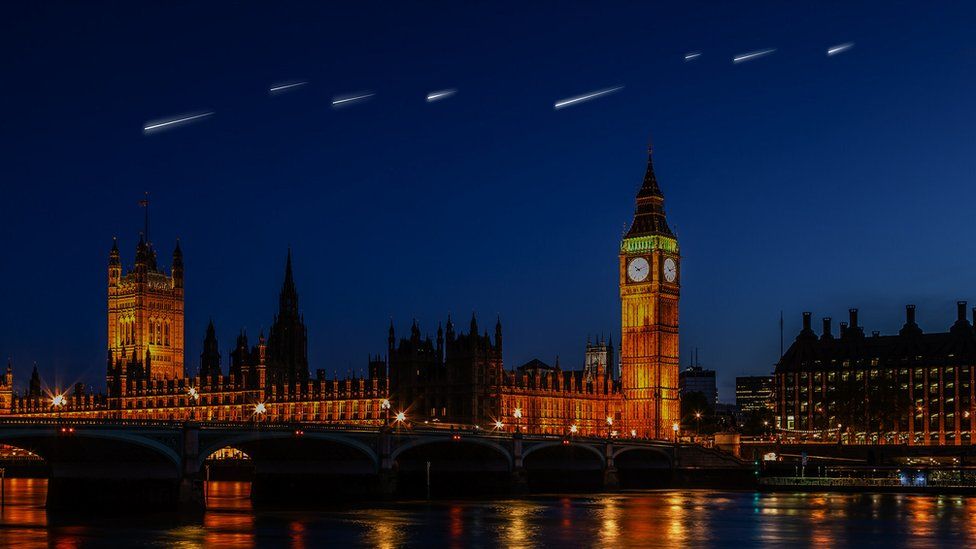Space: World's first artificial shooting star display could happen in 2025
- Published
- comments

What the artificial shooting stars might look like over London
A Japanese company has announced it plans to create the world first artificial meteor shower.
Tokyo-based ALE (Astro Live Experiences) plans to release shooting stars which can be seen from the UK using satellites in 2025.
The company tried to create artificial shooting stars in 2020 using its ALE-2 satellite, but technical problems delayed it.
Now ALE is seeking funding to go ahead with the project which it says is not only entertainment, but will also provide scientific information about climate change.
How would an artificial shooting star work?
Real meteor showers involve particles or dust travelling in high speed through Earth's atmosphere.
ALE says its artificial shooting stars are created by installing meteor-replicating particles into satellites.
The small 1cm spheres would be shot out of a satellite and then burn up 37 to 50 miles above the Earth.
By controlling the position, speed and timing the artificial shooting stars are able emit light in the sky which can be seen from a particular location.
The company also says the shooting star particles would burn up while entering Earth's atmosphere and therefore would not hit the ground.
Compared to a natural shooting star, the human-made shooting stars would travel more slowly and glow for a longer period of time.
The company said its ground-based experiments have succeeded in producing multiple colours, but it is not yet known whether multicoloured shooting stars can be produced in orbit.
Why create artificial shooting stars?
The company says the stars are not just being created for entertainment, but for science.
ALE says they would be able to collect data from the mesosphere, a high layer of our atmosphere just below the stratosphere. The mesosphere is seen as important to climate change studies.
"Our aim is to contribute to the sustainable development of humankind and to bring space closer to all of us, by expanding the area of human activity beyond Earth to discover, collect and apply essential data from space," explained Dr. Lena Okajima, founder and CEO of ALE.
"As a first step, I founded ALE to create the world's first human-made shooting star, to inspire wonder and to spark scientific curiosity."
